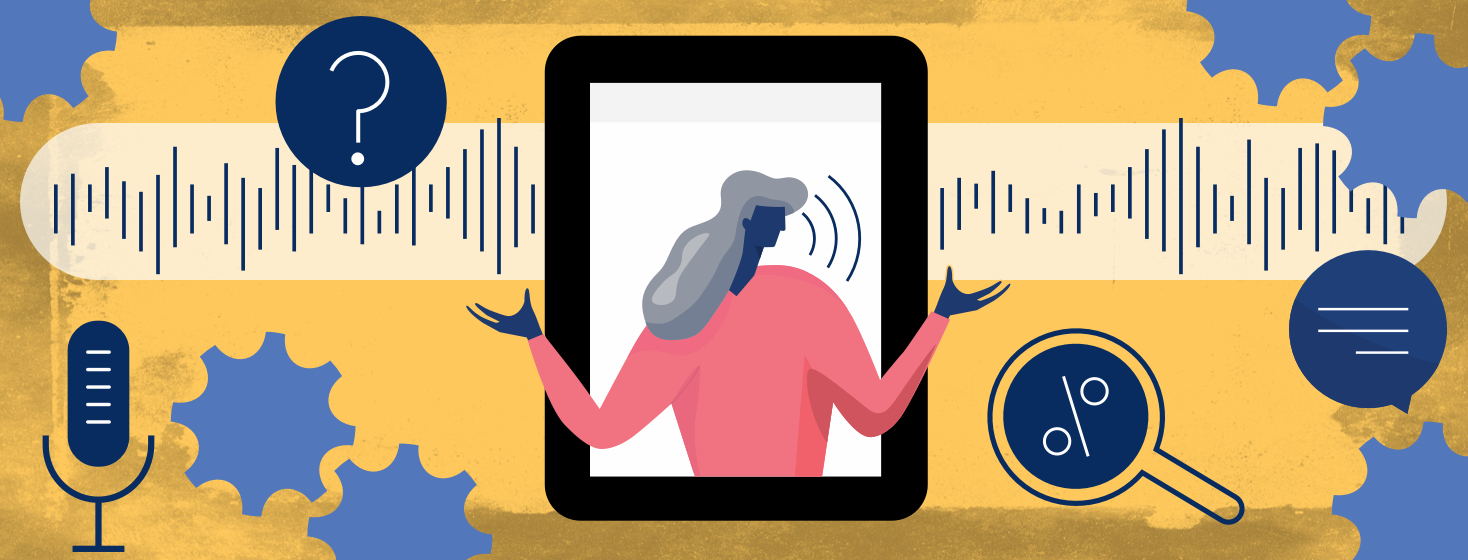Tips for Making Electronic Devices More Accessible
If you or someone you know has macular degeneration or other low vision issues, using electronic devices such as smartphones, tablets and computers may be a challenge. This article contains some tips that we found to make your devices more accessible for many low-vision needs.
Smartphones and tablets
Apple devices
If you have an iPhone, there are multiple features that have been integrated to make your phone a helpful device.
VoiceOver
Built into every iPhone is a program called VoiceOver.1 This program speaks items on your iPhone screen, including all apps that are built into the iPhone. All VoiceOver settings can be accessed through Siri, or through your Settings menu under General and then Accessibility.1
Display accommodations
Also under the Accessibility menu are Display Accommodations.1 Under this menu you can invert colors (white text on a black background), change color filters for your specific vision challenges, or reduce white point, which reduces the intensity of bright colors. The iPhone also has a Zoom feature that magnifies your entire screen, and font adjustments (such as bold and large text), as well as a Magnifier that turns your iPhone into a digital magnifying glass. All of these settings can be found under Accessibility. 1
iPad
The iPad tablet has all of the settings that the iPhone has, as well as the ability to create accessibility shortcuts.1 This means you can create a link to the Magnifier, Zoom or Text Size controls for quick access. Tablets also have larger screens that do allow for more zoom and magnification capabilities than smartphones.3
Android devices
If you have an Android-based phone, there are many options to make it more accessible for your vision needs. (Please note, many of these options only work on version 7.0 and up.)2
TalkBack
In your Android phone settings, under Accessibility, you can find TalkBack, a screen reader that gives spoken feedback and voice notifications.2 There are also options to change your display size as well as your font size. Under the Accessibility menu you can also change your screen colors, color invert your text and color correct for your specific low vision needs. You can also use the “Hey Google” voice command to access any of these settings.2
Display accommodations
All Android tablets have the same settings as the Android smartphones, and again, the larger tablet screen allows for more zoom and magnification capabilities.2
Both Apple and Android products are set up to work with Braille displays using a Bluetooth connection, if Braille is a better option for your needs.1,2
General recommendations
There are a few general recommendations for smartphone and tablet use. First, try to use solid color backgrounds, either dark or light, depending on whether you are using a high contrast setting.3 A solid background is much easier to see your app icons against than a busy patterned or picture background. Second, make sure you have a big enough smartphone screen.3 Most smartphones come in multiple sizes, make sure you have enough screen to fit your vision needs. Lastly, don’t be afraid to look for apps that will suit your needs.3 There are many apps that are compatible with the accessibility settings for both the iPhone and the Android phones. Don’t settle for apps that don’t help you, and don’t be afraid to leave reviews and let developers know that they need to work on their accessibility.3
Computers
Apple computers
Like the iPhone and iPad, Apple’s Mac and Macbook have VoiceOver which works with apps as well as the web browser Safari.4 VoiceOver and Mac both work with Braille readers. You can also use the voice commanded Siri on all Mac products. A new feature that Apple brings with its latest update is Dark Mode, a high-contrast color scheme that works with toolbars and menus.4
Windows computers
Windows 10 offers many accessibility options. Under settings, you can make fonts bigger or you can make everything on your screen bigger, you can change your screen to high contrast, and you can make apps and icons larger.5 You can also change your cursor size, and create cursor trails to see where the mouse is moving on the screen. You can quickly magnify your screen by holding the Windows button on your keyboard and simultaneously using the + or – button to zoom in or out. Windows also has a screen reader, Narrator, by simultaneously pressing the Windows key, CTRL and Enter. The narrator is also compatible with Braille readers.5
Ask for help
This is just a basic list of accessibility options for your electronic devices. There are many other options available. Don’t be afraid to search for other options. YouTube is a great source for other accessibility options.3 Never be afraid to reach out to tech support. If you are near an Apple Store, the technicians at the Genius Bar are able to help you navigate any issues you may have, and they usually can do it for free. Your smartphone plan carrier should also have a technical support group that should be able to help you with any accessibility issues you have or direct you to someone who can. Remember, you’re not bothering anyone by asking for help; tech support is paid specifically to help you.

Join the conversation